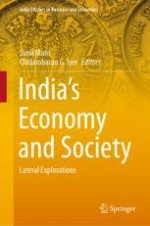2021 | OriginalPaper | Chapter
12. Has Labour Rigidity Slowed Down Employment Growth in Indian Manufacturing?
Activate our intelligent search to find suitable subject content or patents.
Select sections of text to find matching patents with Artificial Intelligence. powered by
Select sections of text to find additional relevant content using AI-assisted search. powered by
